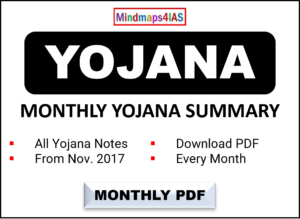Key Takeaways:
-
Bond (General Definition):
-
An instrument to borrow money.
-
Issued by a country’s government or a company to raise funds.
-
Government bonds are considered one of the safest investments, offering the lowest returns (yield).
-
Examples of government bonds: G-secs in India, Treasury in the US, and Gilts in the UK.
-
-
Yield of a Bond:
-
The effective rate of return that a bond earns.
-
Changes with the price of the bond (inversely related).
-
Example: A 10-year G-sec with a face value of Rs 100 and a coupon payment of Rs 5 has a yield of 5%. Buyers pay Rs 100, and the government pays them Rs 5 annually for 10 years, returning the Rs 100 at the end.
-
-
Sovereign Green Bonds (SGrBs):
-
Issued by sovereign entities (e.g., the Government of India).
-
Proceeds are earmarked for “green projects” (as defined by the issuer’s framework).
-
Green projects
-
Energy efficiency in resource utilization
-
Reduce carbon emissions
-
Promote climate resilience
-
Improve natural ecosystems.
-
-
In 2022, the Government of India formulated a framework for issuing such bonds.
-
Demand for SGrBs in India has been muted.
-
-
Blue Bonds:
-
Proposed by SEBI in its paper, ‘Consultation Paper on Green and Blue Bonds as a Mode of Sustainable Finance’.
-
India has significant potential for deploying blue bonds in various aspects of the blue economy.
-
Blue Economy Definitions:
-
World Bank: “Sustainable use of ocean resources for economic growth, improved livelihoods, and jobs while preserving the health of ocean ecosystems.”
-
European Commission: “All economic activities related to oceans, seas, and coasts.”
-
-
-
Masala Bonds:
-
Rupee-denominated bonds, meaning funds are raised from overseas markets in Indian rupees.
-
Eligible issuers: Any corporate, body corporate, and Indian bank.
-
-
Social Impact Bonds:
-
Described by the OECD as a “pay-for-success” instrument.
-
Return on investment depends on the outcome of the financed program.
-
Allows for tracking the progress of the outcome, ensuring transparency for investors.
-
-
Sustainability-Linked Bonds:
-
Defined by the OECD as bonds “for which the financial and/or structural characteristics can vary depending on whether the issuer achieved predefined sustainability or Environmental, social and governance objectives.”
-
A forward-looking, performance-based instrument where issuers commit to future improvements in sustainability outcomes within a determined period.
-
Beyond the Nugget: Sustainable Development Goals (SDGs)
-
The main objective of these bonds is to meet SDG targets.
-
India is reportedly on track to meet its SDGs well ahead of the 2030 deadline.
-
Relevant SDGs:
-
Goal 7: Ensure access to affordable, reliable, sustainable, and modern energy for all.
-
Goal 11: Make cities and human settlements inclusive, safe, resilient, and sustainable.
-
Goal 13: Take urgent action to combat climate change and its impacts.
-
Goal 14: Conserve and sustainably use the oceans, seas, and marine resources for sustainable development.
-
Goal 17: Strengthen the means of implementation and revitalize the global partnership for sustainable development.
-
-
















